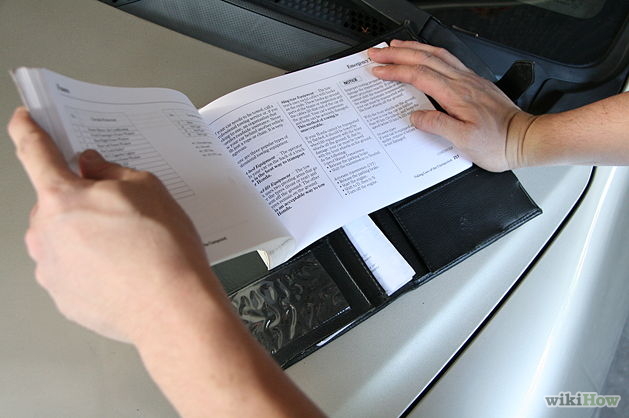Engine related (excerpts)
With rising gas prices and costly car repairs, the last thing you want to worry about is having your car break down. Instead, protect your investment, and get from Point A to Point B as reliably as possible. Keeping your car running longer might be as easy as checking the fluid levels and making sure the tires and well inflated.
Steps
1. Read the car’s manual and schedule maintenance accordingly. Keeping up with your car’s recommended maintenance schedule can help avoid costly problems with your cooling system, drive train, suspension and other components; following the recommended schedule also helps ensure you the get the full benefit of the manufacturer’s warranty.
2. Drive less. Especially, avoid short trips. Cold starts are hard on engines, your gas mileage, and the environment. Short trips can also significantly shorten the life of your muffler. Basically, you get condensation in the exhaust when you start a cold engine, and if you don’t run the car for long enough to evaporate all of the condensation out of the system, excessive amounts of water can accumulate in your muffler, and rust a hole through it. Avoid starting a cold car just to pull it into the garage, for instance. Consider walking to the nearest store for a change. Combine short errands, and, if you have multiple vehicles, drive the one more recently driven when you go out again. Do drive a car at least every week or so, since cars that sit for longer than a week or two at a time have other problems, such as fluids gradually draining out of systems. Consult a mechanic if you will store a car for an extended period.
3. Check the fluids: You should check the level of your antifreeze, oil, transmission fluid, power steering fluid, and brake fluid, very regularly: like every time you buy gas. Even if your car doesn’t leak fluids, it can develop a leak and quickly have a dangerously low level of something. You should also check the color of some of these fluids. Some of these have see-through plastic tanks that you can look through, and some have dipsticks. Antifreeze should be either pink, green, or yellow (Pink for newer cars with “Dex-Cool”, green for old cars with plain Ethyl-Glycol, and green or yellow for cars that have been flushed and filled with universal antifreeze…brown antifreeze should always be flushed, it either has rust or a lot of dirt in it, probably both. Also, never mix different kinds of antifreeze; if you don’t know what color antifreeze your car has, buy a universal brand. Oil should be relatively clear, not black – black oil has been left in the engine for too long. Oil that looks white and milkshake-like has water in it, probably from an internal antifreeze leak, or very rarely, just a large amount of condensation. Transmission fluid should be bright red, and should not smell burnt…it probably needs to be changed if it’s brown or smells burnt.
4. Change the oil regularly: This will improve your gas mileage and protect your engine. The recommended mileage between oil changes is 3,000 – 5,000 miles (or 5000 – 8000 kilometres) or every 3 to 6 months. Doing this could make it possible for your vehicle to attain 200,000 miles. Change the oil filter as well – there is no sense in putting clean oil through a dirty filter, and filters are very cheap and available at any parts store. Please check your service manual, or contact your dealer for your car’s specific needs.
5. Change the air filter: This is something you can do easily at home without using tools, and should be done approximately every 12 thousand miles. You can buy a matching filter at nearly any auto parts store and your owner’s manual will show you where your air filter is located. A dirty, dusty filter can lower gas mileage.
6. Flush these fluids every two years: power steering fluid, brake fluid, and cooling system anti-freeze. Check this timetable against your owner’s manual. Newer cars generally allow longer intervals between changes. Change transmission fluid & filter at least every 50,000 miles (40k to 45k is even better). If you have gone over 50,000 miles without a change, on many transmissions, it is best to NOT change it and hope for the best. Often putting new transmission fluid in a trans that has too many miles on the fluid will actually cause problems because it can break down ‘varnish’ and other gums/solids that have built up in the trans due to over-used fluid.
7 Get your car off to a good start every time you drive it. Start the car and drive off slowly and gently until the car reaches operating temperature. This reduces the strain on the engine while the oil is still cold and thicker. Another option is to use electric engine space heaters, and start the drive with a warm engine. Accelerate promptly to the target speed. For most modern cars, idling a cold engine is both counterproductive and wasteful. Additionally, as you accelerate, release the gas a bit to cause the automatic transmission to upshift while you are not pressing hard on the gas. This causes less wear on the internal clutches. It is easier on the clutches for the car to shift when you ease up on the gas.

How to Extend the Life of Your Car
by
Tags:

Leave a Reply